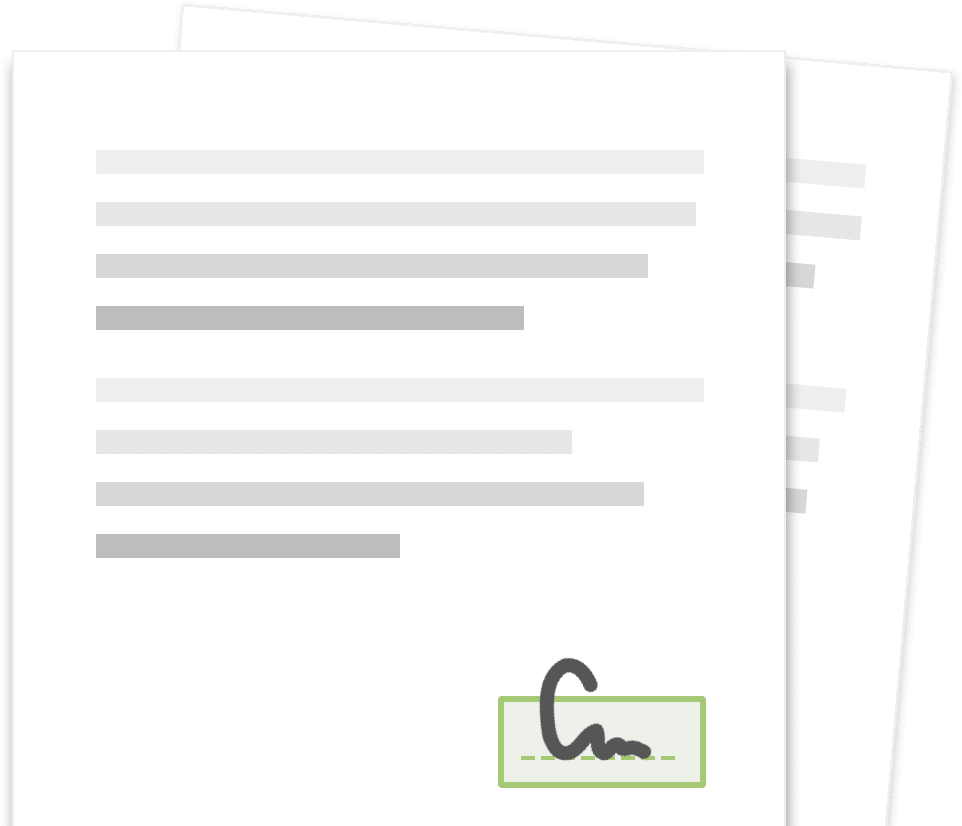Contract Templates > Confidentiality Agreement
Confidentiality Agreement
Customize and deliver this free confidentiality agreement in minutes. Your recipient can review from any device and sign immediately with built-in eSignature. Fill, deliver and track in minutes!
Fill & deliver this agreement.

Related Templates:
A client confidentiality agreement, also known as a non disclosure agreement (NDA) is a contractual agreement between two or more entities. It dictates the terms and conditions of how the parties involved will treat exchanged information and is usually a promise to protect trade secrets.
Trade secrets refer to any proprietary information that gives its owner a competitive advantage and has an element of secrecy. They include everything from patterns, devices, chemical formulas, novel ideas, information, or processes i.e., any information that is considered to be intellectual property.
So are confidentiality agreements legally binding? Well, the short version is yes. Any party that agrees to sign one of these agreements promises to keep trade secrets a secret, violating the agreement would open them up to legal recourse such as fines and other consequences.
Confidential agreements are often used in cases where sensitive information is shared, and if the data were to get out, the consequences would be devastating. In business, they’re typically used in mergers and acquisitions, product research and development and even when hiring.
While client confidentiality agreements can be both oral or written, business or individuals should insist on getting written agreements because they abstract many of the legal complications of verbal contracts.

Mutual Confidentiality Agreement
There are two main types of client agreements, i.e., unilateral and mutual confidentiality agreement each of which has its use case.
In mutual confidential disclosure agreements, involved parties are required to maintain secrecy, while standard unilateral agreements have simple confidentiality clauses that only apply to the receiving party. Both agreements have their use cases.
Unilateral non-disclosure agreements, on the other hand, are typically used when innovators share confidential information with prospective investors or licensing bodies.
Mutual non-disclosure agreements are typically used when the parties involved exchange confidential information, for instance, inventor groups. With mutual confidentiality clauses, the goal of the two parties involved is to create a confidential relationship.
Both parties are bound by the agreement and are linked by the information exchanged between them. They are typically used to keep the information conveyed, for instance, trade secrets, private and confidential.
Mutual confidentiality agreements often include clauses that dictate the potential repercussions of violating the non-disclosure agreement for both parties. An example of this would be defining who pays for the legal fees in court proceedings as well as any other fines for breaking the mutual non-disclosure agreement in California.
Employee Confidentiality Agreement

When it comes to protecting trade secrets, one of the main challenges businesses face is the possibility of their employees taking their trade secrets to close competitors. Using employee non-disclosure agreements when hiring is an effective method of preventing this.
An employee confidential agreement policy is a legally binding contractual agreement in which the employee promises not to disclose sensitive trade secrets revealed while in employment.
Employee NDAs help businesses keep their secrets a secret by providing grounds for taking legal action against employees who violate the agreement.
In Texas and other parts of the world, employee confidentiality agreements are in effect from the moment they are signed, during employment and for a specified period after termination of employment.
As an employer, having employees sign a non-disclosure agreement is the best way of ensuring that trade secrets and other proprietary information such as product or client lists, marketing strategy remain confidential.
It’s an excellent example of a unilateral confidential agreement where the receiving party promises not to disclose or profit in any way from the company’s trade secrets, whether supplied by the employer or suppliers or customers or any other party.
The main goal of employee confidential agreements in California is to prevent former employees from benefiting from trade secrets of their former employers or helping competitors turn a profit from proprietary information.
Some employee non-disclosure agreements bar former employees from working in a similar industry for a specified length of time, typically not more than two years. Others will even go as far as to prohibit them from working for industry vendors and suppliers.
Most employee confidentiality agreements often stipulate that the company claims the right of ownership on anything the employee builds, writes, manufactures or creates during or as a consequence of employment. This includes anything developed or created by the employee in their spare time.
Free Non-Disclosure Agreement Template
The main reason individuals or organizations use a non-disclosure agreement for a business idea, friends, or employees is to build a confidential relationship between parties involved. It’s a legally binding agreement, and violating it may have serious legal implications.
Using NDAs is an effective way of protecting trade secrets and preventing proprietary information that gives the company a competitive edge from getting into the wrong hands. One great NDA purpose example is in product or service design and development.
When using a free non-disclosure agreement template pdf, all the key elements must be included in case you need to sue for violating an agreement. These include correctly defining what can be classified as confidential information as well as any exclusions of confidentiality.
It’s also vital that the free non-disclosure template agreement pdf dictates the obligations of both parties, the length of time that it’s valid as well as any other miscellaneous provisions. It should specify the extent to which the parties involved can use confidential information.
Lastly, it should clearly define instances where disclosing confidential information is allowed such as when talking to law enforcement officers. If you’re having trouble coming up with a detailed Non-disclosure agreement, be sure to check our free fillable Non Disclosure Agreement.


